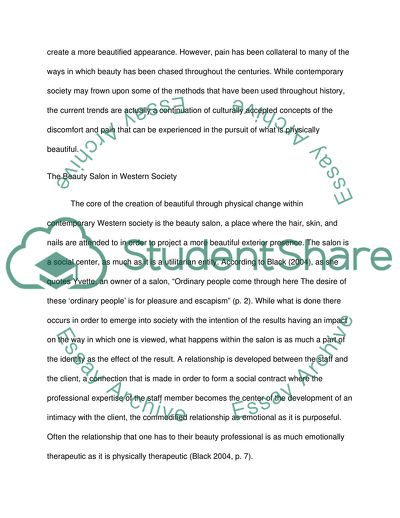Cite this document
(Social Identity through Creating the Beautiful Body Coursework - 1, n.d.)
Social Identity through Creating the Beautiful Body Coursework - 1. https://studentshare.org/psychology/1748558-how-are-fashion-and-appearance-central-to-the-construction-of-social-identities-discuss-with-reference-to-specific-examples
Social Identity through Creating the Beautiful Body Coursework - 1. https://studentshare.org/psychology/1748558-how-are-fashion-and-appearance-central-to-the-construction-of-social-identities-discuss-with-reference-to-specific-examples
(Social Identity through Creating the Beautiful Body Coursework - 1)
Social Identity through Creating the Beautiful Body Coursework - 1. https://studentshare.org/psychology/1748558-how-are-fashion-and-appearance-central-to-the-construction-of-social-identities-discuss-with-reference-to-specific-examples.
Social Identity through Creating the Beautiful Body Coursework - 1. https://studentshare.org/psychology/1748558-how-are-fashion-and-appearance-central-to-the-construction-of-social-identities-discuss-with-reference-to-specific-examples.
“Social Identity through Creating the Beautiful Body Coursework - 1”. https://studentshare.org/psychology/1748558-how-are-fashion-and-appearance-central-to-the-construction-of-social-identities-discuss-with-reference-to-specific-examples.


